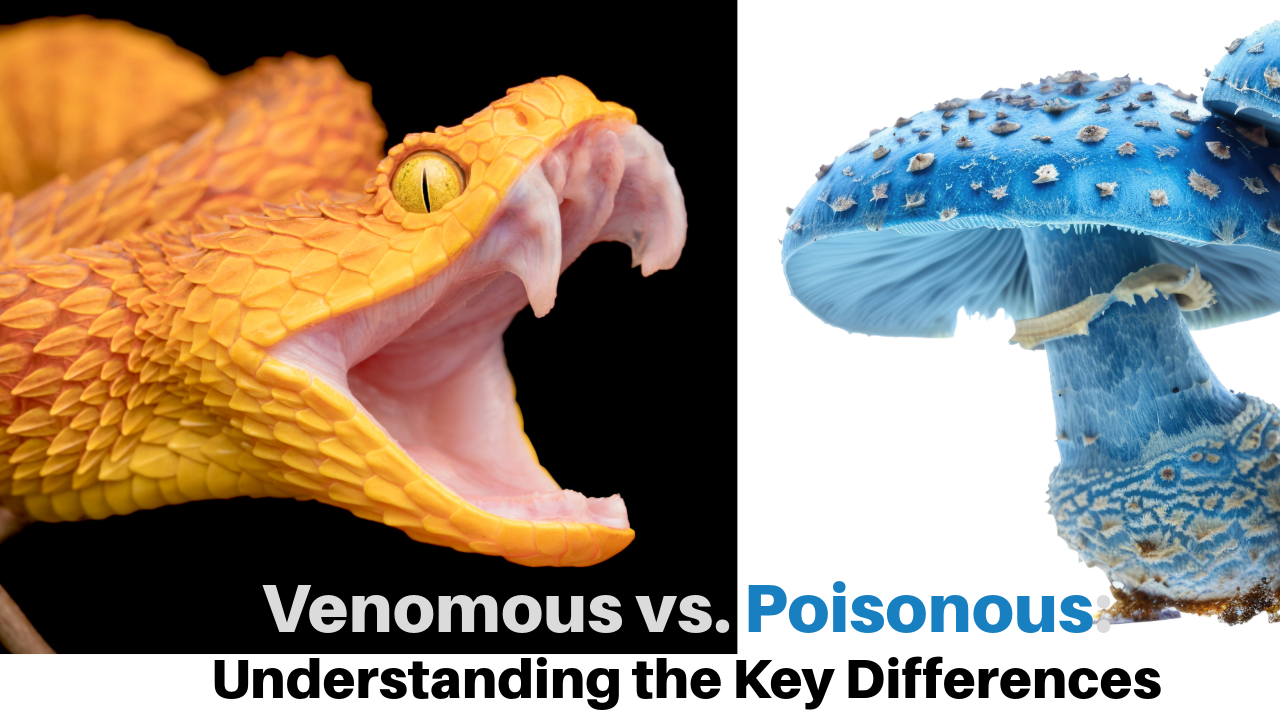
At our reptile shows we often get asked “Is it poisonous?” Our answer is always, “why, are you going to eat it?”
When it comes to reptiles, many people often find themselves confused by the terms “venomous” and “poisonous.” Despite being used interchangeably by many, these terms refer to different mechanisms by which animals (and other life forms) can defend themselves or affect others. Understanding these differences can enhance our appreciation of the incredible biodiversity of the animal kingdom and the fascinating adaptations that reptiles possess.
What does Venomous mean?
Venomous animals have a specialized method of delivering toxins, typically through a bite or sting. Venom is actively injected into another creature, causing various effects depending on the species and the potency of the venom. For example, snakes like the rattlesnake and the coral snake utilize fangs to inject venom into their prey, which assists in immobilizing their food.
Some common characteristics of venomous reptiles include:
- Delivery Mechanism: Venom is delivered through fangs.
- Purpose: Venom is primarily used for hunting prey or for defense against predators.
- Exclusivity: Not all snakes are venomous; in fact, many are harmless and rely on different methods for survival.
What does Poisonous mean?
On the other hand, poisonous animals contain toxins that can cause harm when they are ingested or touched. The toxin is not injected, meaning that the animal does not have a specific mechanism to deliver the toxin to another creature. Instead, they rely on other defenses to ward off threats. For instance, a poison dart frog has toxic skin secretions that can severely affect anyone who attempts to handle it.
Key aspects of poisonous reptiles include:
- Delivery Mechanism: Poison is not actively delivered; it’s typically present in the skin or tissues.
- Purpose: Poison serves as a deterrent to predators, making the animal less appealing as a meal.
- Survival Strategy: Many poisonous animals rely on their striking appearance as a warning sign to potential predators.
The Key Differences
While both venomous and poisonous animals utilize toxins, the fundamental difference lies in the method of delivery:
- Venomous: Actively injects toxins into a target through bites or stings.
- Poisonous: Contains toxins that are harmful when consumed or touched, relying on passive defense strategies.
Why It Matters
Understanding these differences enriches our knowledge of wildlife and highlights the diverse ways animals adapt to their environments. This knowledge is especially crucial for anyone interested in reptiles, whether for educational purposes, conservation efforts, or simply to enhance appreciation of these incredible creatures.
As we explore the fascinating world of reptiles, let’s remember that the diversity within this group extends beyond just their appearance. Whether venomous or poisonous, each species plays a vital role in the ecosystem and offers unique adaptations that allow them to survive and thrive.
For an amazing experience that dives deeper into the world of reptiles and their fascinating behaviors, book a show with Expedition Reptile LLC.




